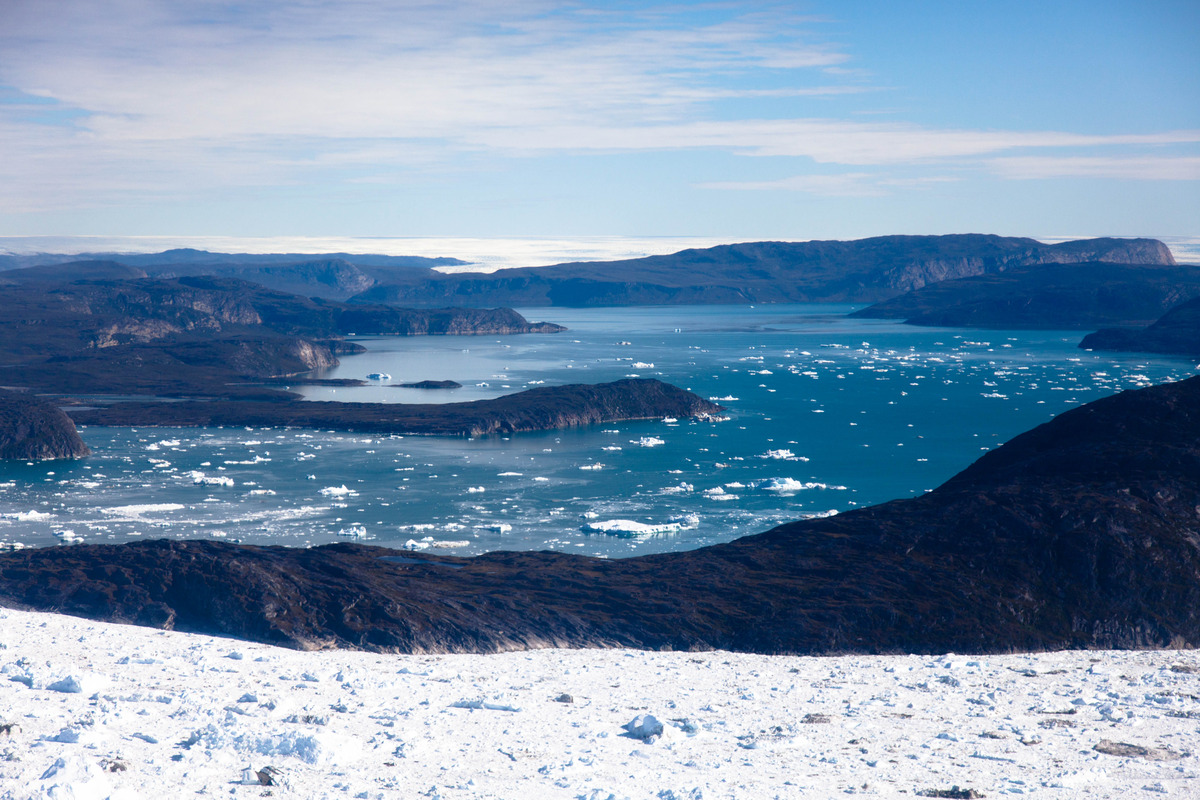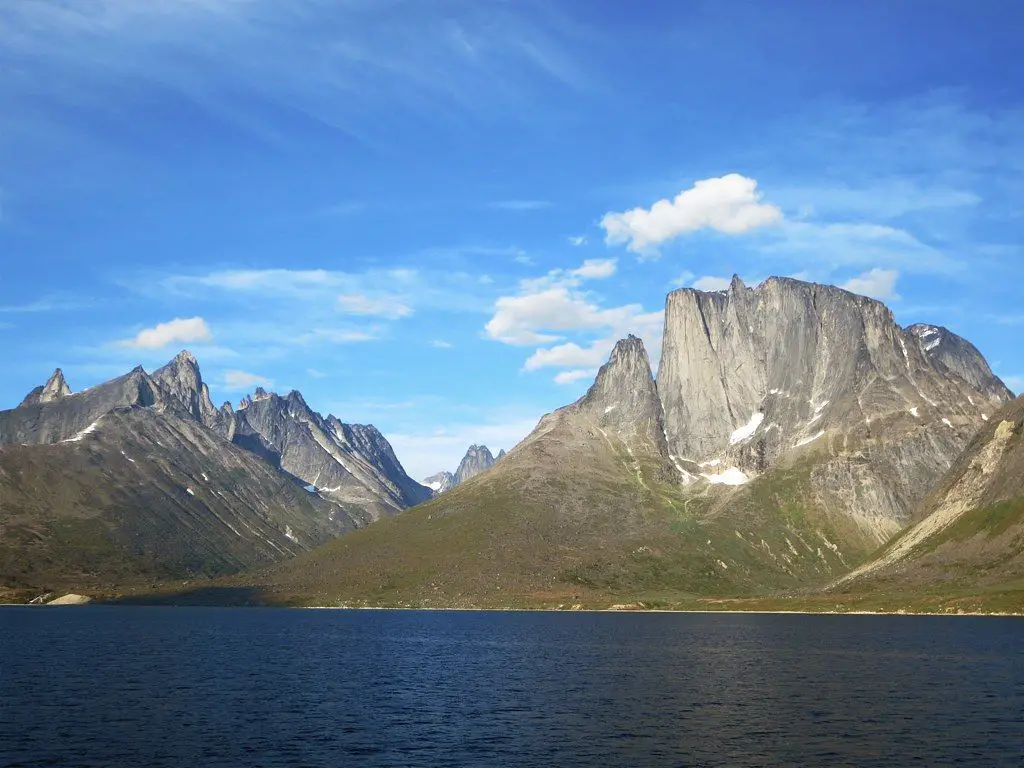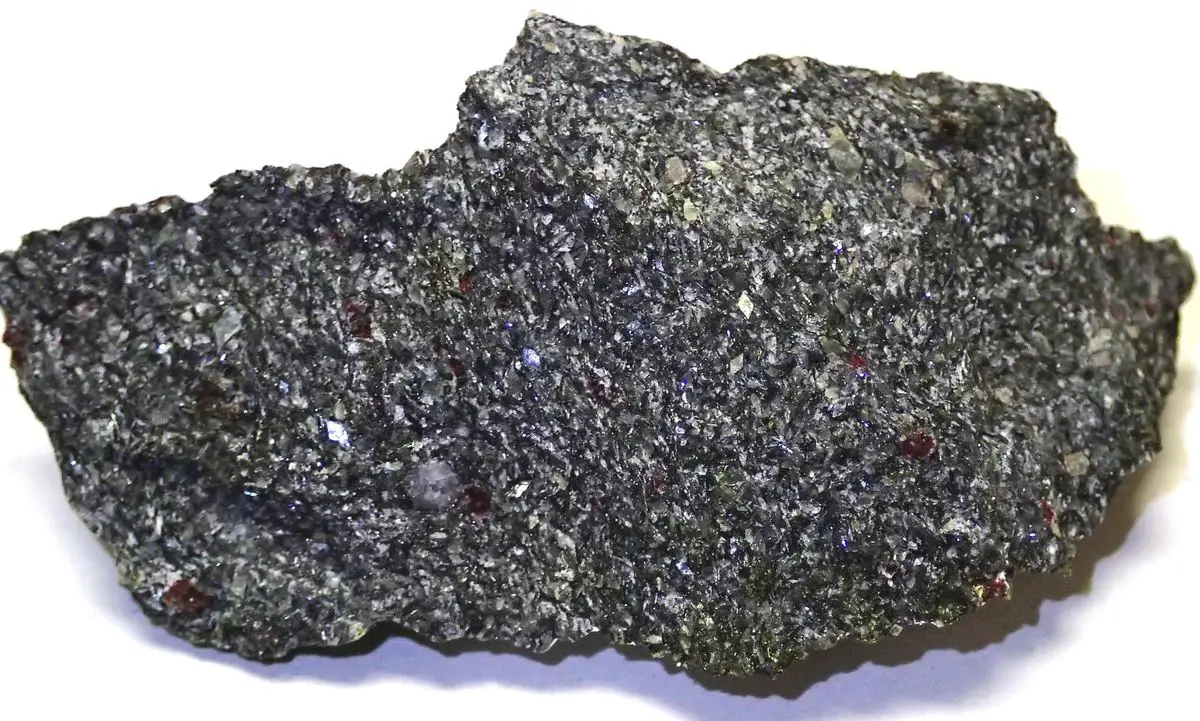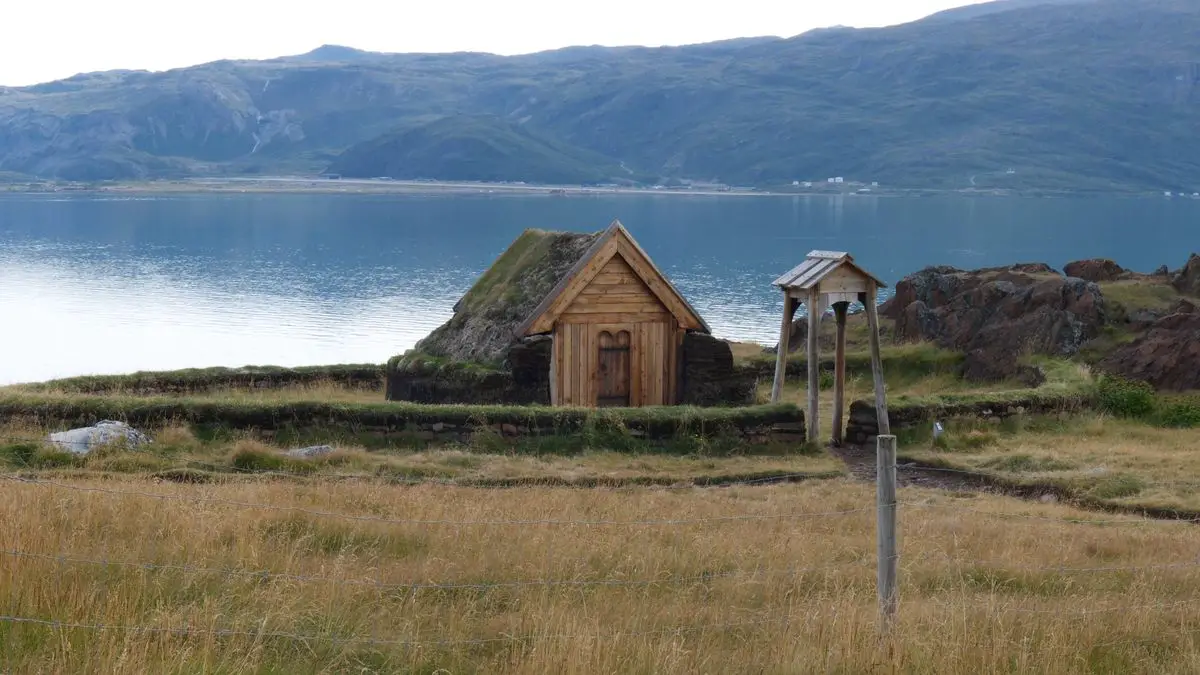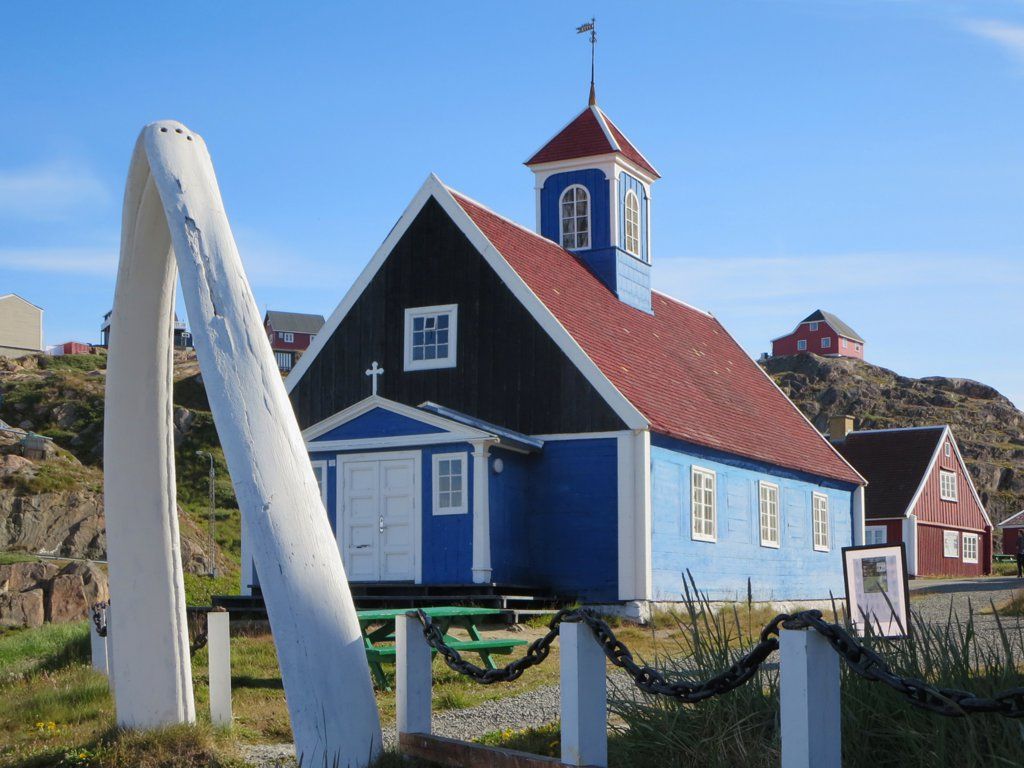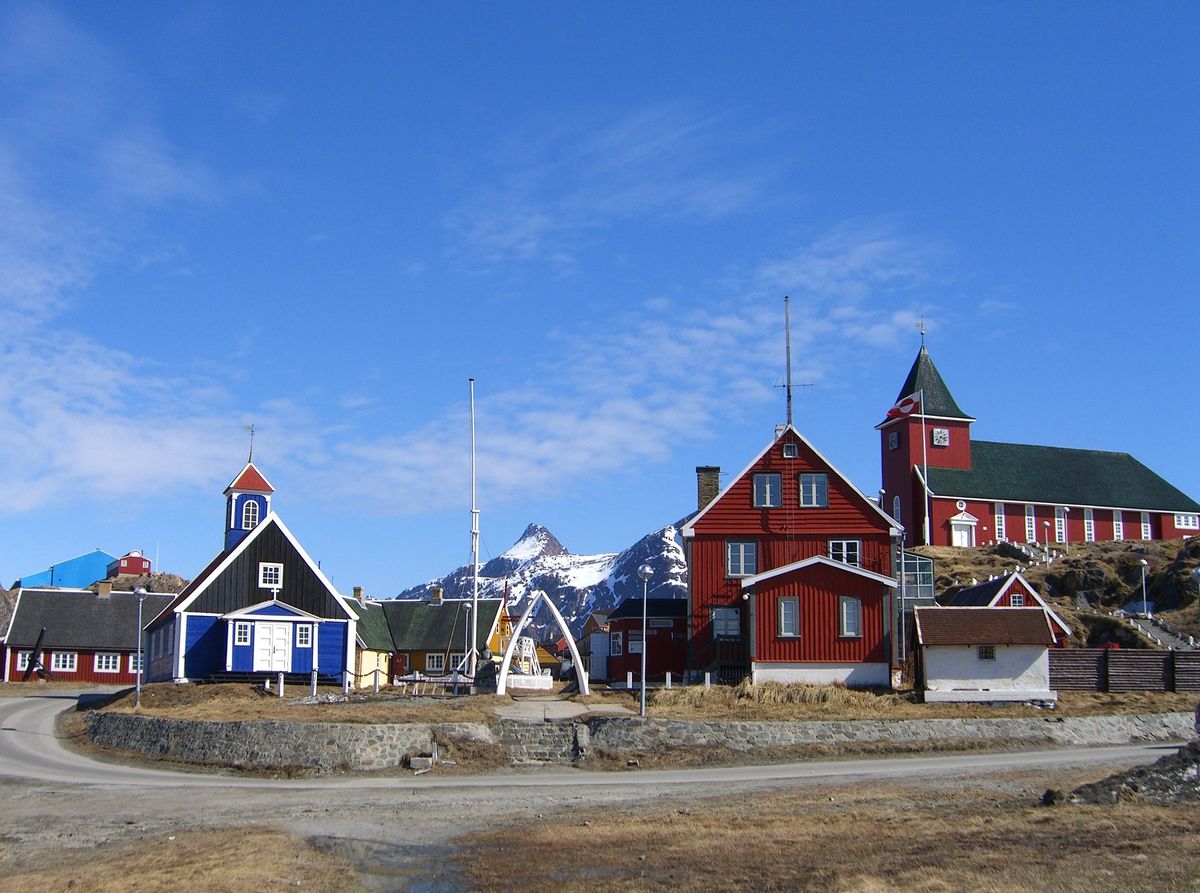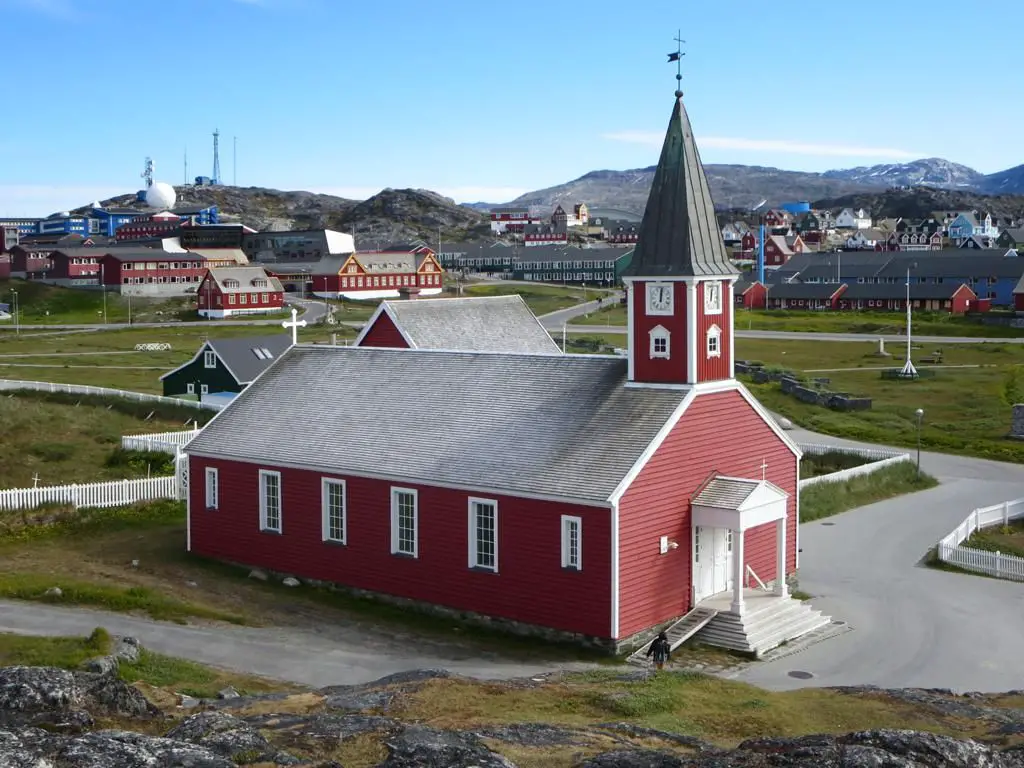Wondermondo 🢖 World 🢖 Wonders of North America 🢖 Wonders of Greenland
Territory
Wonders of Greenland
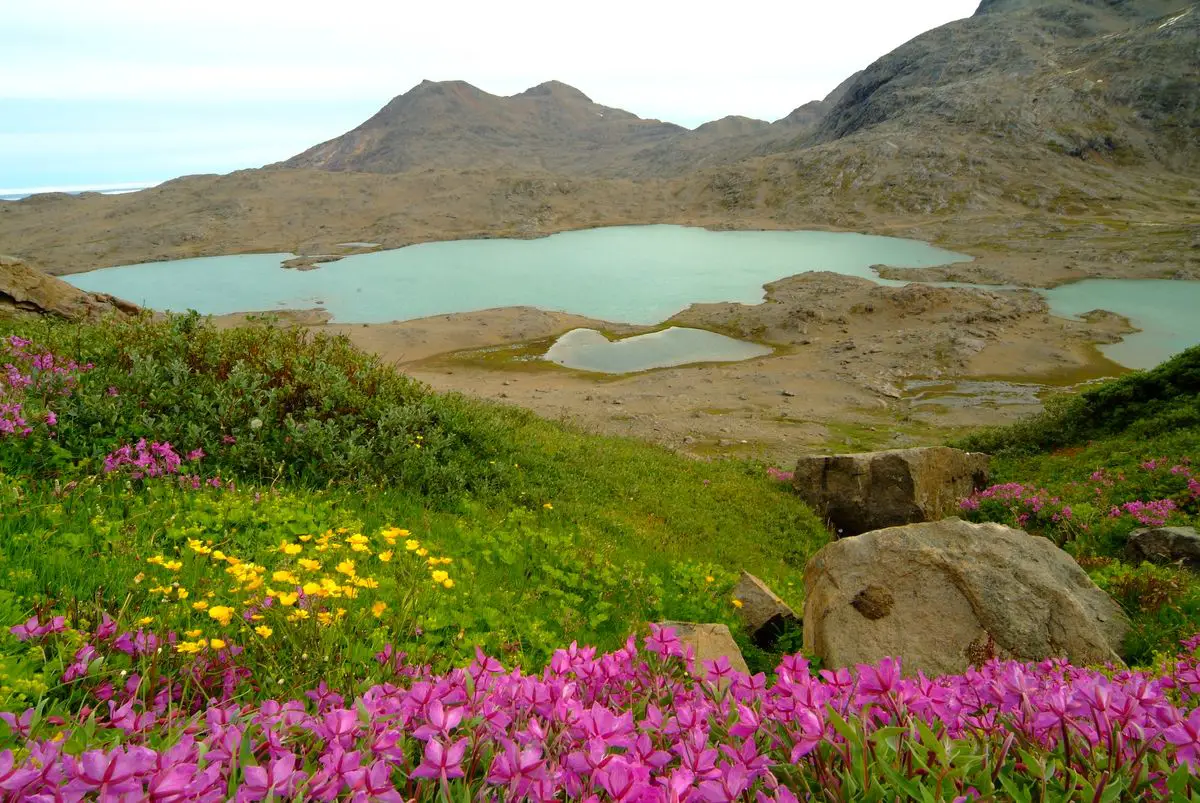
 Highlights
Highlights
Although Greenland is the largest island in the world, its wonders and landmarks are surprisingly little known.
The middle part of the island is covered with an ice shield but the extensive, jagged "rims" of the island are very interesting. Here are found unique minerals and rocks, hot springs, endemic plants, ruins of old Viking buildings (the only true medieval European architecture in America!).
Most memorable is the breathtaking scenery of this northern land. Greenland offers harsh, rugged sights, but in the late spring the meadows are covered with millions of flowers – and in the south could be found even a small forest!
Map with the described wonders
If you see this after your page is loaded completely, leafletJS files are missing.
 Top 25 wonders of Greenland
Top 25 wonders of Greenland
Geological wonders
Ilulissat Icefjord (Kangia)
Qaasuitsup (includes the Thule Air Base)
A unique fjord with Sermeq Kujalleq glacier at its end. This is the most productive glacier in the Northern Hemisphere flowing 40 m per day and producing many icebergs. Many icebergs are up to 1 km high and remain stranded in the fjord until pushed by the force of glacier again.
Ikaite tufa columns in Ikka Fjord
Sermersooq
Almost unique phenomenon – submarine tufa columns created by cold seeps from submarine springs. Columns are formed of ikaite – an unstable mineral that disintegrates in temperatures above 6 – 7 ° C. In total there are more than 600 such columns up to 18 m tall.
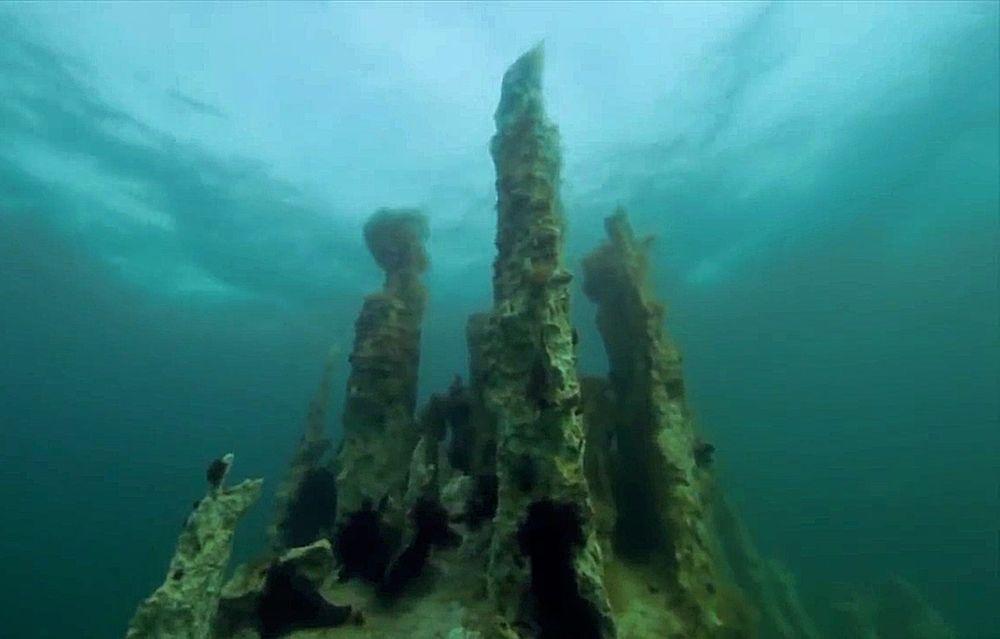
Kullorsuaq (Devil’s Thumb)
Qaasuitsup (includes the Thule Air Base)
Spectacular, 546 m tall rock pinnacle.
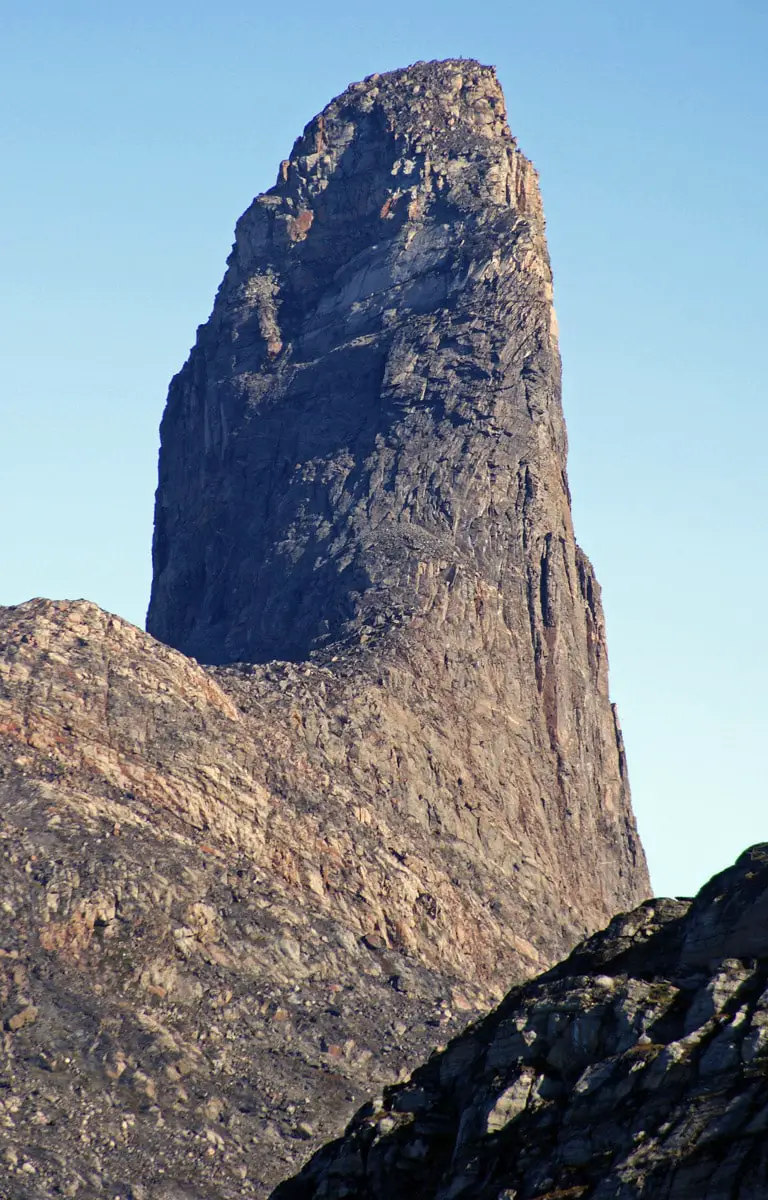
Elephant Foot Glacier
Northeast Greenland National Park
An unusual glacier – a giant poodle of ice. This near-perfect circular glacier has a diameter of 5 km.
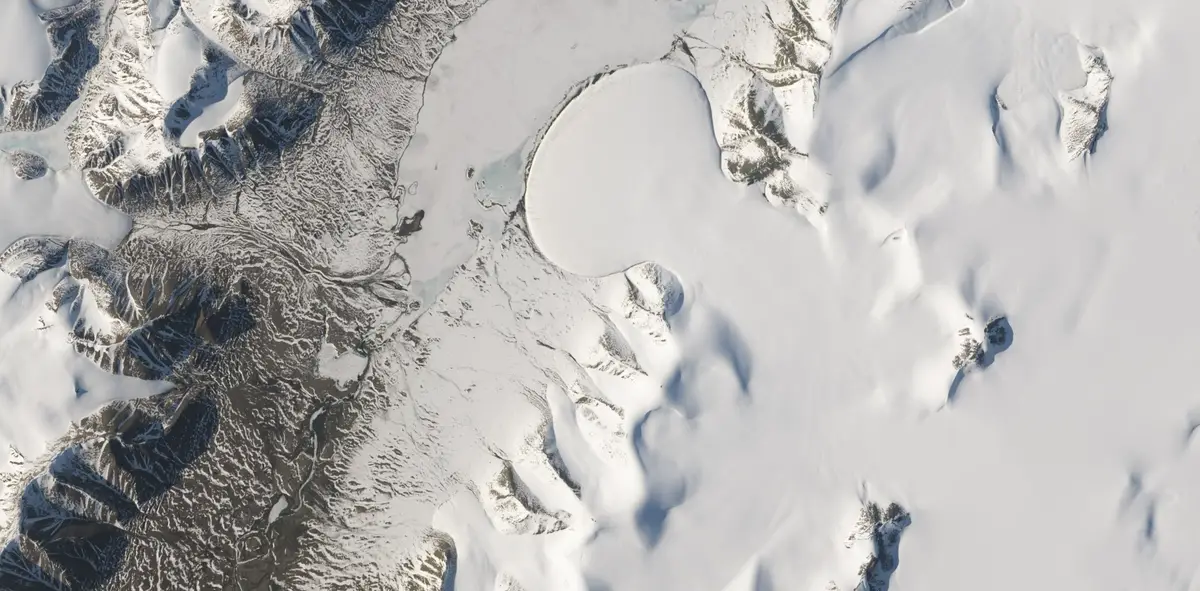
Ketil
Kujalleq
Very tall monolith resembling a very steep pyramid. This pinnacle rises more than 1 km tall above the surroundings.
Maujit Qaqarssuasia (Thumbnail)
Kujalleq
One of the tallest cliffs in the world, rising 1,560 m tall over the fjord. It reaches this height over a distance of some 860 m. Located in one of the most rugged mountain regions of the world. It is well possible that there are taller and steeper cliffs elsewhere in Greenland.
Uunartoq geothermal springs
Kujalleq
Group of warm springs, the temperature of the water – 34 – 38 ° C. The only hot springs in Greenland where one can bathe – and actively used for this. Next to the springs stand the ruins of a monastery that was built around the 11th century.
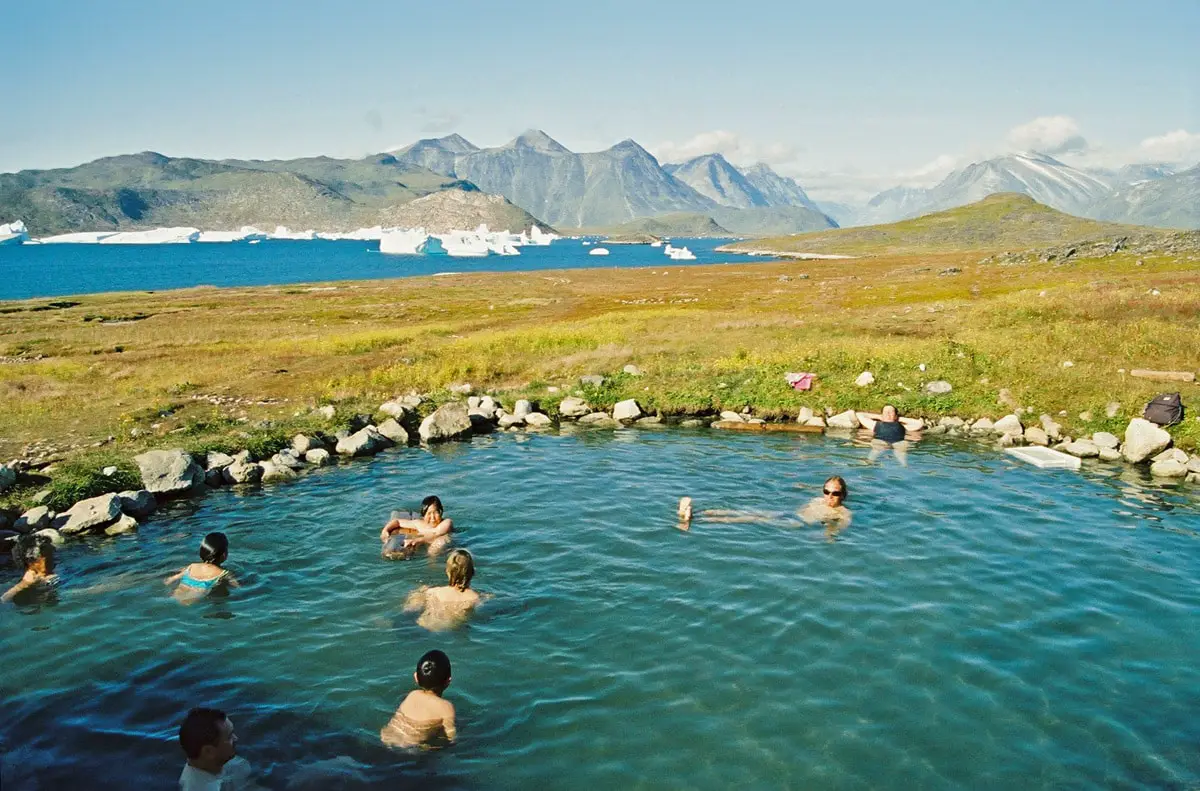
Qorlortorsuaq (waterfall)
Kujalleq
Reportedly the largest waterfall in Greenland, although this enormous island has countless very tall and often – powerful waterfalls that are not listed.
Ilimaussaq intrusive complex
Kujalleq
Very unusual alkalic intrusion, 8 by 17 km large. Contains numerous unique types of rocks and many very rare minerals, uranium deposits, and large deposits of rare earth elements and other rare metals.
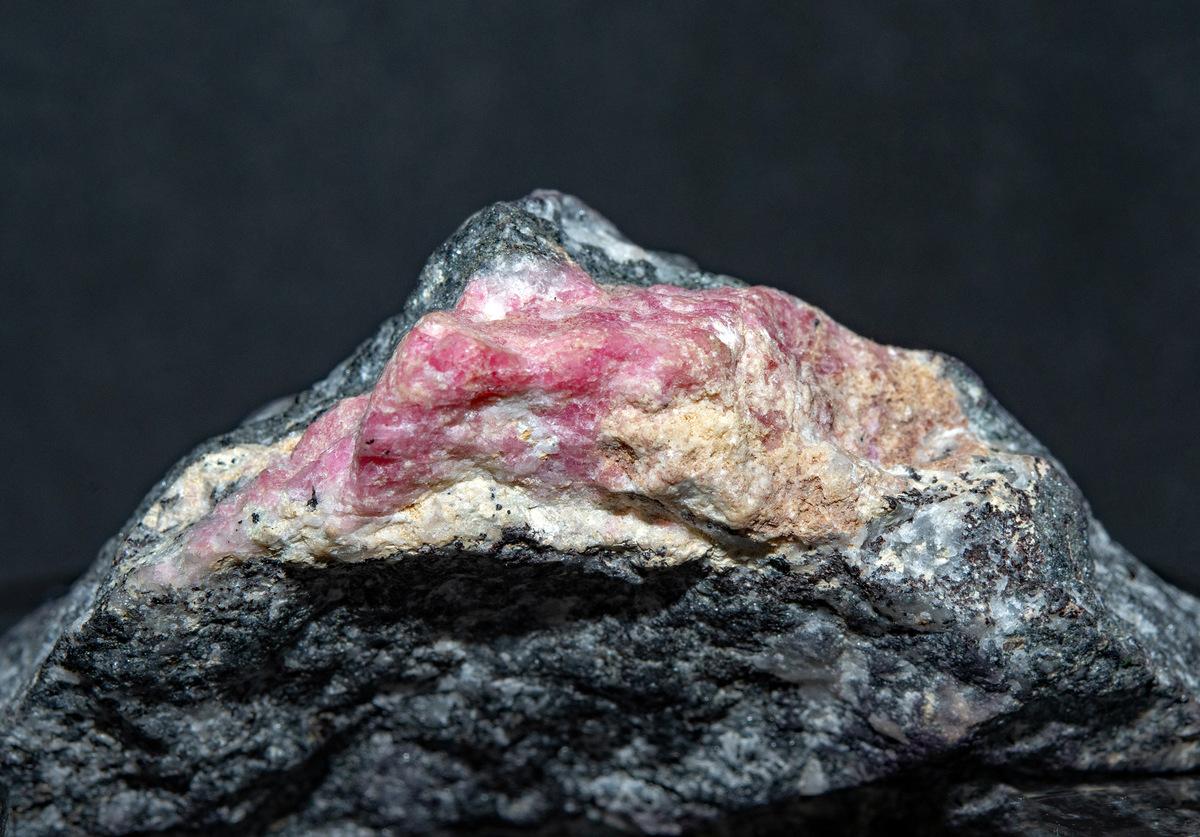
Kvanefjeld
Kujalleq
The second-largest deposit of rare earth oxides in the world, also a very rich find of uranium. Minerals are enclosed in a unique rock named lujavrite, some minerals are fluorescent.
Qeqertarsuatsiaat ruby find (Ruby Island)
Sermersooq
Rich find of gem quality rubies and sapphires – gemstones are included in anorthosite rock.
Biological wonders
Qinngua Valley
Kujalleq
The only forest in Greenland, with willows and birches several meters high. Valley has more than 300 species of plants. This is a place of unsurpassed beauty, with a clean river and tall, snow-clad mountains around.
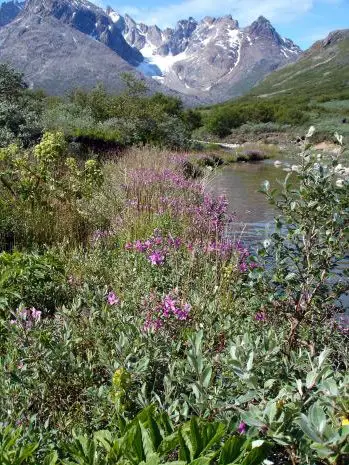
Ymer Island
Northeast Greenland National Park
Devonian sediments on this island have provided rich and very interesting finds of fossils belonging to early fishes and tetrapods. Here have been discovered fossils of Ymeria and Ichthyostega.
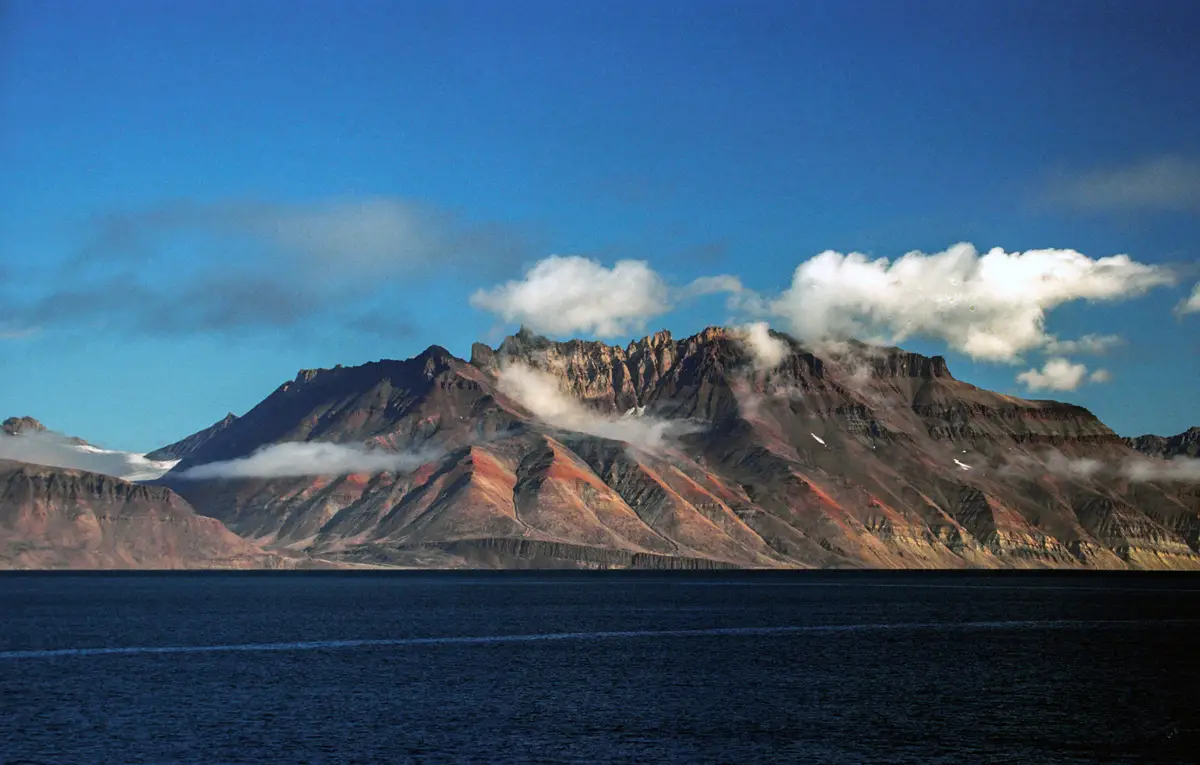
Architecture wonders
Brattahlíð
Kujalleq
Erik the Red’s estate, established at the end of the 10th century AD. Here most likely was built the first Christian church in New World – Þjóðhildarkirkja. This small chapel is reconstructed now. Another church was built in the 14th century, with tombstones and runes for Ingibjørg’s Grave. The best farmland in Greenland is here.
Hvalsey Fjord Church
Kujalleq
Ruins of the oldest original church in the Americas, built in the late 10th century by Vikings. The church was built from enormous stone blocks, some up to 5 tons heavy. It fell into disuse in the 15th century.
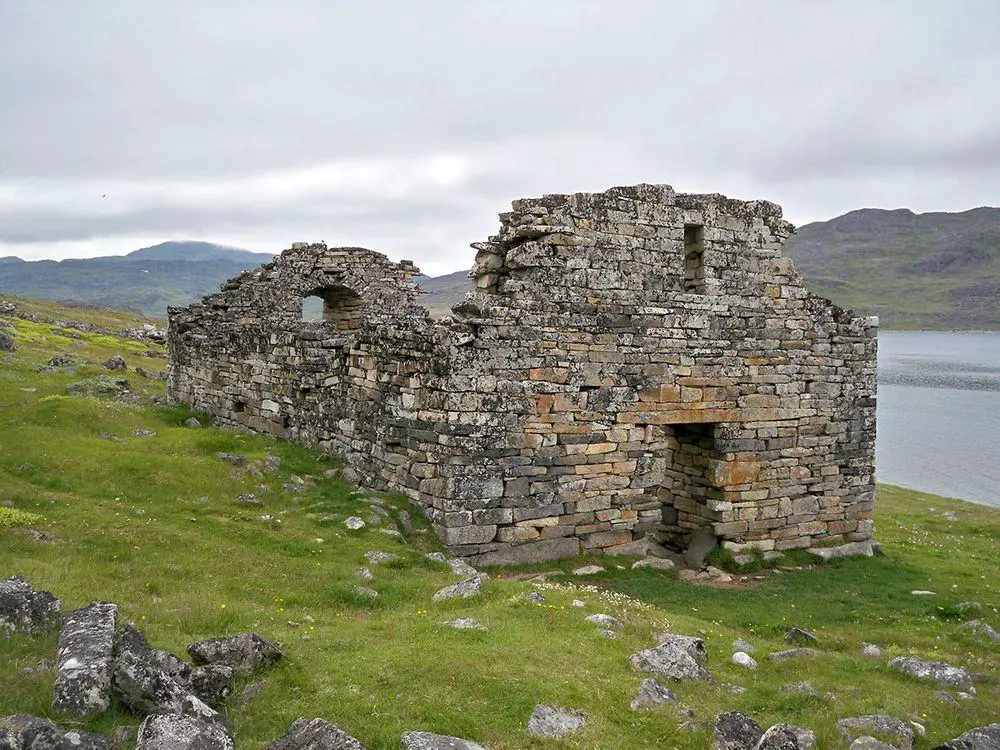
Ameralik Span
Sermersooq
The longest span of overhead power transmission line in the world. The length of the span is 5,376 m, constructed in 1993.
Sondrestrom Upper Atmospheric Research Facility
Qeqqata
An ionospheric and atmospheric research facility with more than 20 instruments. Most recognizable is the L band incoherent scatter radar with 32 m large antenna.
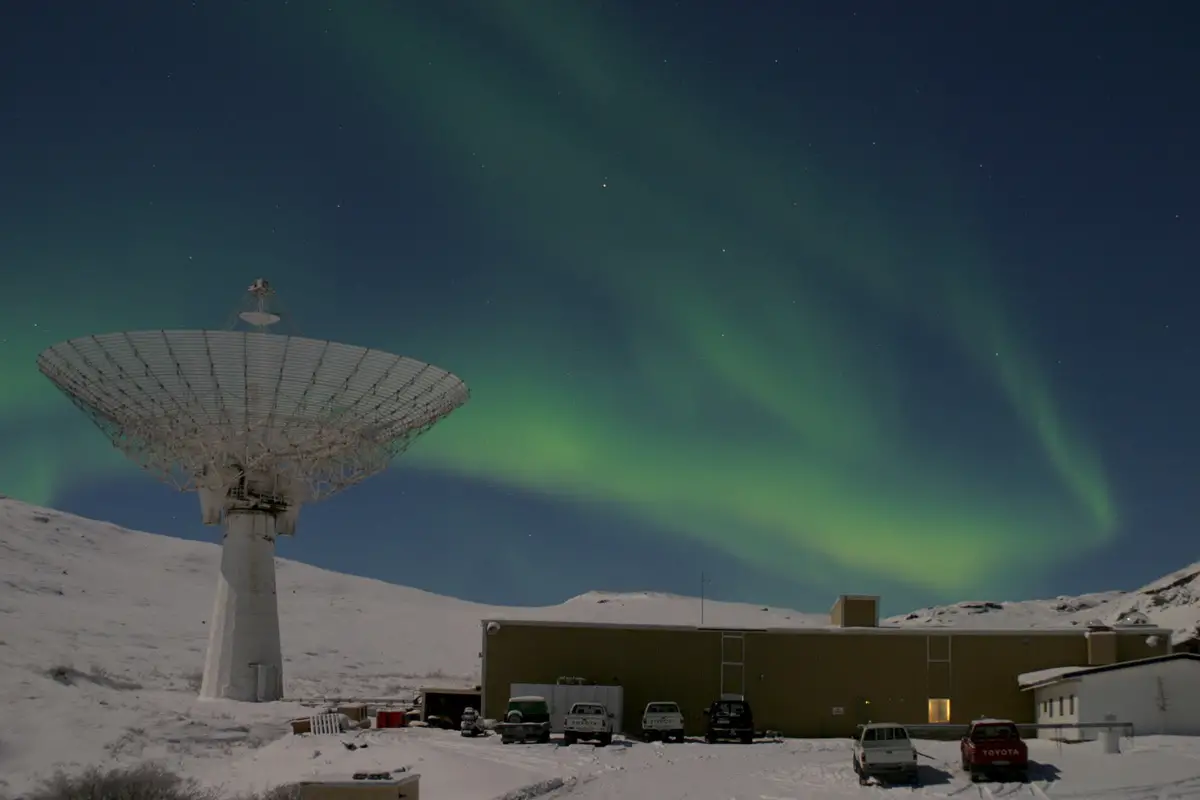
Kingittorsuaq Runestone and cairns
Qaasuitsup (includes the Thule Air Base)
Northernmost Viking site. On the summit of this small, rocky island in 1824 was discovered a Viking runestone that was located in the group of three cairns. Stone was engraved in the 12th or 13th century, part of this inscription has not been deciphered and might be a secret, coded message.
Moravian Brethren Mission House
Sermersooq
Large historical building, constructed in 1747 from wood that was shipped from the Netherlands. Served as a center of the Moravian Brethren Mission in Greenland.
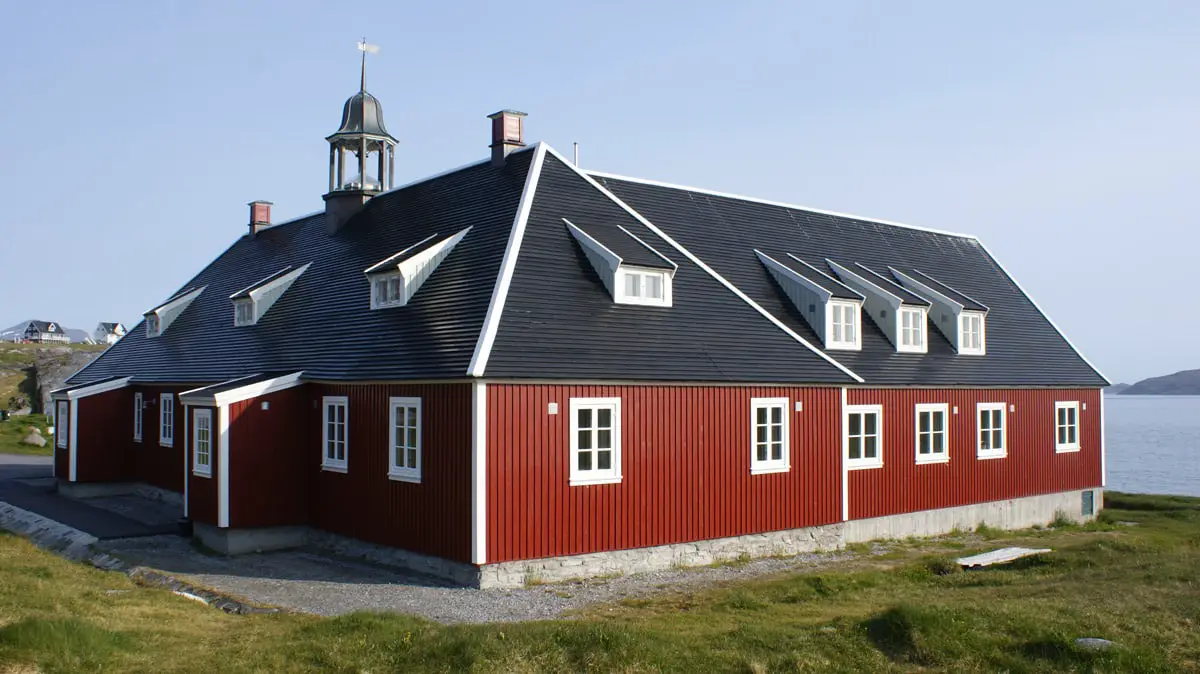
Ivittuut
Sermersooq
This abandoned mining town developed around the only large find of cryolite in the world. Cryolite – an important agent in the extraction of aluminum – was discovered here in 1799, and mining took place from 1859 to 1987. Today natural cryolite is replaced with synthetic one.
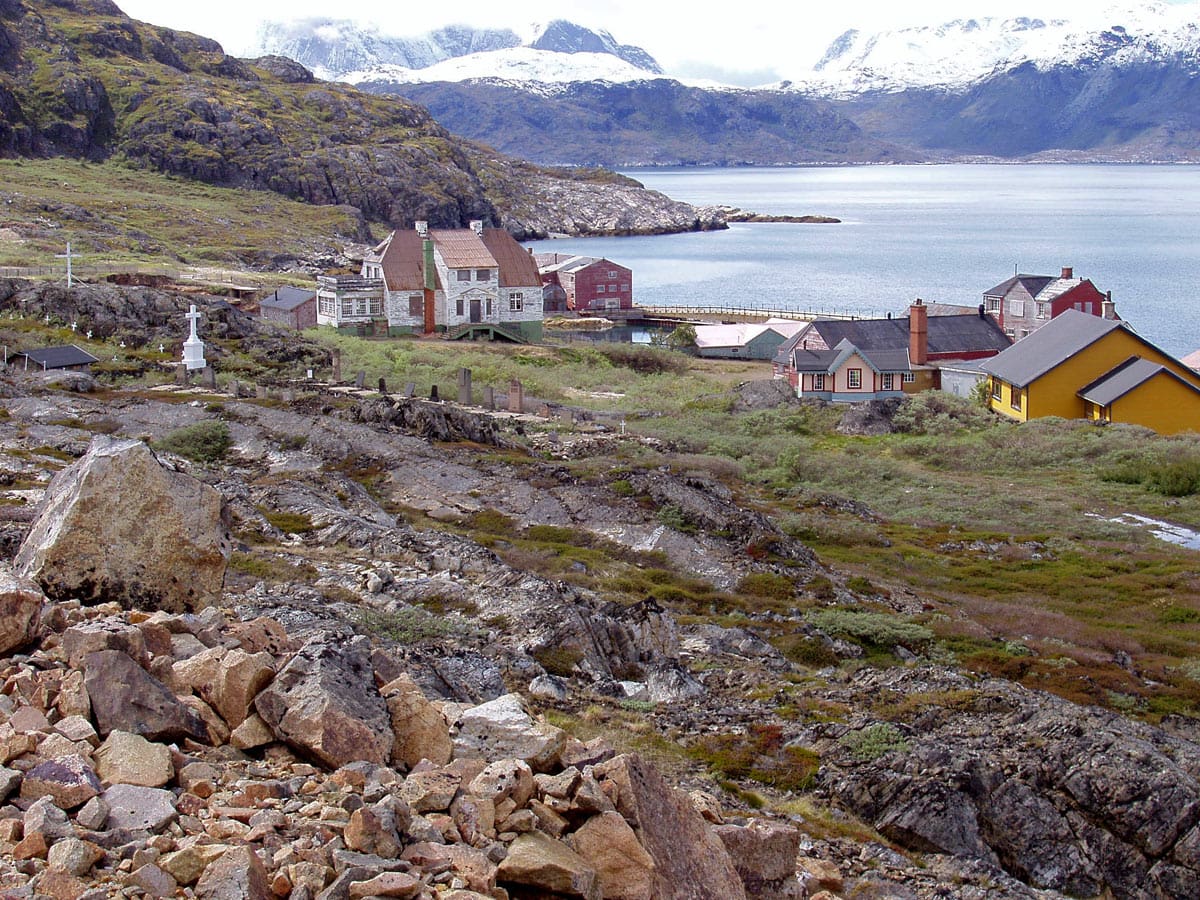
Bethel-kirken, Sisimiut
Qaasuitsup (includes the Thule Air Base)
The oldest standing church in Greenland, built in 1775.
Paul Egede’s house in Qasigiannguit
Qaasuitsup (includes the Thule Air Base)
The oldest surviving wooden building in Greenland, constructed in 1734 and moved to its present location in 1806. Now it serves as a museum.
Landnamsgaarden
Kujalleq
Ruins of a homestead that was built by Vikings around 1000. This area contains many ruins of Norse buildings. Nearby are located some of the few plots of arable land in Greenland.
Old Sisimiut
Qaasuitsup (includes the Thule Air Base)
Group of historical buildings from the 18th and 19th centuries, part of them brought from nearby villages.
 Recommended books
Recommended books
Trekking in Greenland: The Arctic Circle Trail
Greenland is a harsh environment, largely covered in ice, but it is also a fascinating place to explore, especially on foot in remote places, and in the summer months it can be surprisingly easy. A great way to do it is by tackling the Arctic Circle Trail – a splendid trekking route that fits neatly into one of the largest ice-free areas of West Greenland, 40-50 km (25-30 miles) north of the Arctic Circle.
This Cold Heaven: Seven Seasons in Greenland
For the last decade, Gretel Ehrlich has been obsessed by an island, a terrain, a culture, and the treacherous beauty of a world that is defined by ice. In This Cold Heaven she combines the story of her travels with history and cultural anthropology to reveal a Greenland that few of us could otherwise imagine.

